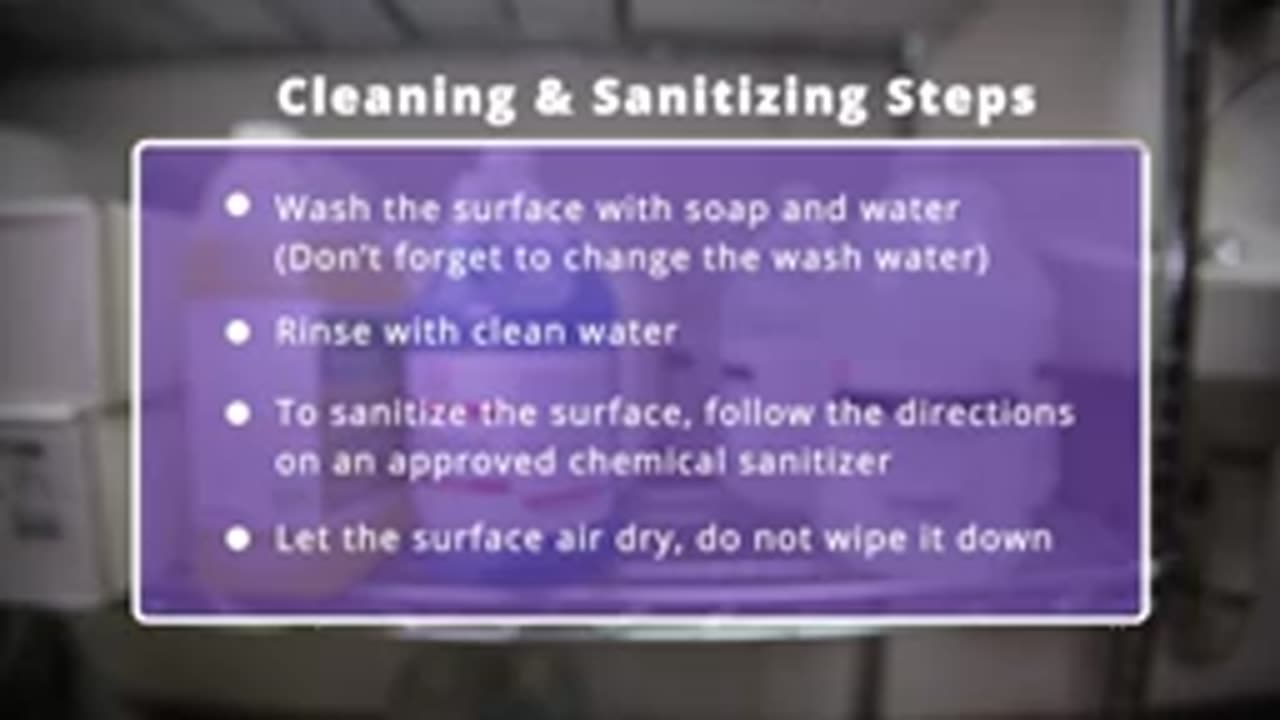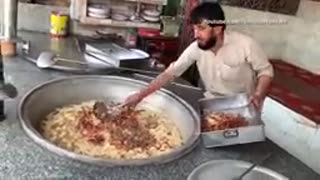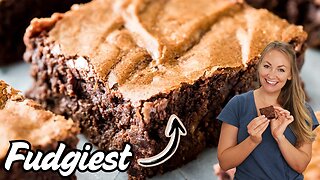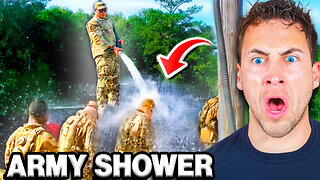Premium Only Content

Cleaning and Sanitizing (english)
**Cleaning and Sanitizing** are critical components of maintaining a safe, hygienic environment, especially in foodservice, healthcare, and general workplace settings. Here’s an overview of the best practices for both:
---
### **1. What is Cleaning?**
- **Cleaning** refers to the process of removing dirt, food particles, grease, and other visible contaminants from surfaces.
- It can be done using water, detergents, or other cleaning agents.
- **Purpose**: The goal of cleaning is to make surfaces look and feel clean, and to prepare them for the sanitizing process.
---
### **2. What is Sanitizing?**
- **Sanitizing** involves reducing harmful microorganisms (like bacteria and viruses) on surfaces to a safe level, typically with chemicals or heat.
- Sanitizing does not remove dirt or grease but targets microorganisms that could cause illness.
- **Purpose**: The goal of sanitizing is to ensure that surfaces are free of harmful pathogens that could pose a health risk.
---
### **3. The Cleaning and Sanitizing Process**
#### **A. Cleaning Steps**
1. **Remove Debris**: Begin by scraping or wiping away food particles or visible dirt from the surface.
2. **Apply Cleaning Solution**: Use the appropriate cleaning agent (e.g., detergent, degreaser) based on the surface type.
3. **Scrub**: Scrub the surface to remove dirt, grease, or stains using a brush, sponge, or cloth.
4. **Rinse**: After scrubbing, rinse the surface with clean water to remove the cleaning solution and any leftover debris.
#### **B. Sanitizing Steps**
1. **Apply Sanitizer**: Use a food-safe sanitizer (e.g., chlorine-based, iodine, or quaternary ammonium) for food contact surfaces. For non-food contact areas, use the appropriate sanitizer.
2. **Allow Contact Time**: Leave the sanitizer on the surface for the recommended time (usually a few minutes) to kill bacteria and viruses.
3. **Let it Dry**: Allow surfaces to air dry. Do not wipe away the sanitizer during this process to ensure maximum effectiveness.
---
### **4. Important Factors for Effective Cleaning and Sanitizing**
- **Temperature**: Use warm water (not too hot) for cleaning as it helps detergents to dissolve better. Sanitizing usually requires cool or room temperature water.
- **Contact Time**: Sanitizers need to stay on surfaces for a specific amount of time (usually 30 seconds to a few minutes) to be effective.
- **Concentration**: Use the correct concentration of chemicals as recommended by the manufacturer for both cleaning and sanitizing.
- **Cleanliness**: If surfaces are not properly cleaned before sanitizing, sanitizing won’t be as effective. Clean surfaces first, then sanitize.
- **Tools**: Use separate cloths, sponges, and brushes for different areas (e.g., one for kitchen counters, another for bathrooms) to avoid cross-contamination.
---
### **5. Cleaning and Sanitizing Best Practices**
1. **Establish a Routine**: Implement regular cleaning and sanitizing schedules for high-touch surfaces like doorknobs, light switches, and countertops.
2. **Train Staff**: Educate everyone involved in cleaning about proper cleaning and sanitizing procedures, including correct chemical handling and usage.
3. **Use Appropriate Chemicals**: Always choose the right cleaning and sanitizing chemicals for the task at hand (e.g., use food-safe cleaners for food prep areas).
4. **Keep Tools Clean**: Regularly disinfect and replace cleaning tools like sponges, brushes, and cloths to avoid cross-contamination.
5. **Monitor the Environment**: Regularly inspect cleaning and sanitizing processes to ensure they meet health standards and work effectively.
---
### **6. Differences Between Cleaning and Sanitizing**
| **Cleaning** | **Sanitizing** |
|------------------------------------------------|---------------------------------------------|
| Removes dirt, grime, and visible contaminants. | Reduces harmful microorganisms to safe levels. |
| Uses water and detergents. | Uses chemical sanitizers or heat. |
| Does not kill germs. | Kills or reduces pathogens on surfaces. |
| Necessary to prepare surfaces for sanitizing. | Necessary to reduce the risk of foodborne illness. |
---
### **7. Types of Sanitizing Methods**
- **Chemical Sanitizing**: Use of chemicals like chlorine bleach, quaternary ammonium compounds, and iodine to kill pathogens.
- **Heat Sanitizing**: Involves using hot water (above 77°C/170°F) or steam to kill microorganisms, often used in dishwashing machines.
---
### **8. Guidelines for Different Areas**
- **Kitchens**: Clean and sanitize all surfaces that come into contact with food, including counters, cutting boards, knives, and sinks.
- **Bathrooms**: Clean and sanitize toilets, sinks, and other high-touch areas like door handles and faucets.
- **Floors**: Sweep and mop regularly, and sanitize high-traffic areas.
- **Equipment**: Disinfect all equipment, including dishwashers, refrigerators, and blenders, following the manufacturer's guidelines.
---
### **9. Safety Tips**
- **Proper Ventilation**: Always ensure proper ventilation when using cleaning chemicals to avoid inhalation of fumes.
- **Personal Protective Equipment (PPE)**: Wear gloves, masks, and eye protection when using cleaning chemicals to avoid skin and eye irritation.
- **Label Chemicals**: Always label chemical bottles clearly, and store them in their original containers to avoid confusion.
---
### **10. Common Mistakes to Avoid**
- **Not Cleaning Before Sanitizing**: Sanitizing over dirt and grease can reduce the effectiveness of the sanitizer.
- **Using Too Much or Too Little Sanitizer**: Follow manufacturer instructions on how much sanitizer to use for the proper concentration.
- **Mixing Chemicals**: Avoid mixing different cleaning chemicals, as some combinations can create harmful fumes (e.g., bleach and ammonia).
---
By following these practices and maintaining a thorough cleaning and sanitizing routine, you ensure that your environment remains safe, hygienic, and free from harmful pathogens. Would you like more information on any specific aspect of this process?
-
 20:24
20:24
HSESafetyInformation
6 months agoKABULI PULAO RECIPE - Original 40+ KG Afghani Meat Pulau Prepared - Street Food Qabili Plav Recipe_2
35 -
 7:02
7:02
Sugar Spun Run
22 hours ago $0.03 earnedBrownies from Scratch
1723 -
 10:07
10:07
The Official Steve Harvey
14 hours ago82 Years of Love, Laughs & Keeping It Real
158 -
 7:00
7:00
DropItLikeItsScott
13 hours agoIs This The Best 1911 Pistol Ever Made? Oriskany Arms 1911
441 -
 2:03:01
2:03:01
MG Show
19 hours agoBiden Auto Pen Scandal; President Trump White House Religious Liberty Commission
7.27K12 -
 14:18
14:18
Actual Justice Warrior
3 days agoBody Camera Video DESTROYS BLM Hoax
2.13K14 -
 21:17
21:17
itsSeanDaniel
1 day agoCNN Host's Vaccine Lies BACKFIRE in Front of MAGA Doctor
2.76K9 -
 1:00:48
1:00:48
Dialogue works
23 hours ago $0.84 earnedMark Sleboda: Putin DROPS a Bombshell on Trump… as China & India Shake the World!
13.3K4 -
 8:03
8:03
MattMorseTV
16 hours ago $7.39 earnedTrump just GAVE THE ORDER.
52.2K40 -
 11:23
11:23
Nikko Ortiz
15 hours agoArmy Tik Tok Fails Go Hard
7.78K1